Sigma 300 800mm Review | Sigmonster Lens review
Massive Front Element. No filter
The Sigma 300-800mm. Notoriously known as the Sigmonster worldwide, nicknamed by Philippines bird photographer Romy Ocon.
Feel free to click on each photograph to check the len’s sharpness & Exif (Best viewed on a large screen). For Exif, you have to save it and open the information.
The first version of this lens was introduced to the world in 2002 in Photokina by Sigma Corporation of Japan. The later improved DG version was released later in 2005. The added DG coating basically help reduce reflections, flare and ghosting (caused by reflections from the digital sensor) that are noticed in Digital High Resolution images. Till todate in 2018, Sigma still have not come up with an updated version of this lens.

Sigma 300-800mm @ 600mm, F/7.1 Slight shutter shake in this one as I was on the boardwalk & my body was shaking the boardwalk. Whoops. Nevertheless still usable when I dont pixelpeep.

It later flew lower to the water’s edge. Ignoring my presence as I was not moving. Sigma 300-800mm @ ISO 500, 0.8 secs, F/5.6, 600mm, Mirror lock
This is 1 of a kind lens in the photographic industry. Till today. Sigma has always impressed the photography crowd with their crazy inventions of lens assembly where no other camera companies come close by. Not even Nikon or Canon make really special versatile lenses out of the box that often. Today, the only Super Telephoto Zoom lens made by other manufacturers that come close by with this Sigmonster is the Zoom-Nikkor 1200-1700mm f/5.6-8P IF-ED (16,000grams) that was Manufactured in 1993. After the 1200-1700mm, everything went quiet in the special super telephoto lenses class other than Sigma. Sigma Corporation came out with more high quality, special, out of the world zoom lenses that no other lens makers has ever made, like the only 300mm F/2.8 zoomable lens, the Sigma APO 120-300mm F/2.8 EX DG HSM OS Sports. Back in 2008, Sigma came out with also the worlds first 500mm F/2.8 lens! The most amazing part is that it is a Zoomable 500mm F2.8 lens, all the way back to 200mm, keeping a constant aperture of F2.8! Of course the 200-500mm F/2.8 weighs a ton, with Big Aperture comes Big Glass, with Big Glass comes a whopping Big USD $25,999 new on amazon! Oh it comes with free shipping too. Not bad.
I have been using the Sigma 300-800mm for a few years and here I will be sharing my HONEST personal review as much as I can about this particular lens to the world. I will be focusing more on real world practicality, knowledge experienced and what I learnt with this lens in the field, rather than talking more about the MTF charts..how many elements in how many groups.. etc. I have not cared about MTF charts nor how many elements in how many groups throughout my 12 years in Photography. One can know so much theories about the MTF charts and the technical aspects of the lens, but does it help in your way of shooting? Good to know abit of it, but no point digging deep into it as at the end of the day, can that help improve your shooting?

Both the pros and cons of this lens, you would be reading it, from my personal experience with this lens. After this, it all depends on you if you would want to go for this legendary lens.
Before making the hefty decision to own the Sigma 300-800mm lens, I started wildlife photography (Majority birds) with the old Nikkor AF-D 80-400mm F/4.5 – 5.6 VR meant for film cameras back in 2007. Why birds, because in Singapore, that is the most abundant and ‘easiest’ wild subjects you can find and shoot, with mammals being quite scarce here. I then went on to borrow and use the Sigma 150-500mm F5-6.3 APO DG OS HSM (Very good lens for that price!) from a friendly chap named Roy I met in the field for a period of time. Thank You Roy! Your kindness is very much appreciated! During that time, I sold off the Nikkor AF-D 80-400mm VR to fund for my next target lens, knowing that one day I have to return the Sigma 150 – 500mm lens to Roy. Sure enough, I returned the lens to him, and got my next bigger lens after that.
I soon bought the Sigma APO 120-300mm F/2.8 EX DG HSM (Non OS) and that became my one and only primary lens for wildlife photography. Well, but not for long. Honestly, I hated that lens. It was a love and hate relationship. But I was closer to the hate side. No hard feelings for the 120-300mm F/2.8 users and Sigma fans out there. I couldn’t shoot at F/2.8 for my wildlife photos, for my leisure photos, for my work photos, for my sports photos. No matter how many times I went to Sigma Singapore to try to calibrate (Back at that time there was no Autofocus Fine Tune in most DSLR bodies). The sharpest point was always soft wide open. Even when I set it on a tripod and focused manually, it was just soft, when shot wide open still. You spend a lump sum for a fast lens like an F/2.8 lens to shoot at F/2.8, not to stop down to F/4 or higer just to have usable photos. I rather be off with a cheap, lighter 70-300mm lens and achieve the same results. I would not want to share any further as I have used only a copy of that lens, and most probably I have gotten myself a lemon. With that, lets get back to the 300-800mm.
I sold off the Sigma 120-300mm lens soon after and finally went to 1 of the ultimate super telephoto lens in the market. The beastly Sigma APO 300-800mm F/5.6 EX DG HSM, as known as the Sigmonster. Before purchasing this lens (I bought it used, but in a pretty good condition), I weighed in the pros and cons, comparing it to other super telephoto lenses of the same class for a pretty long time.
Lenses I compared,
Sigma APO 300-800mm F/5.6 EX DG HSM
Nikkor AF-S 600mm F/4G ED II
Nikkor AF-S 400mm F/2.8 ED II
(Wanted to add in the Sigzilla 200-500mm F/2.8 in my shortlist but I might need to incur the cost of sherpas too)
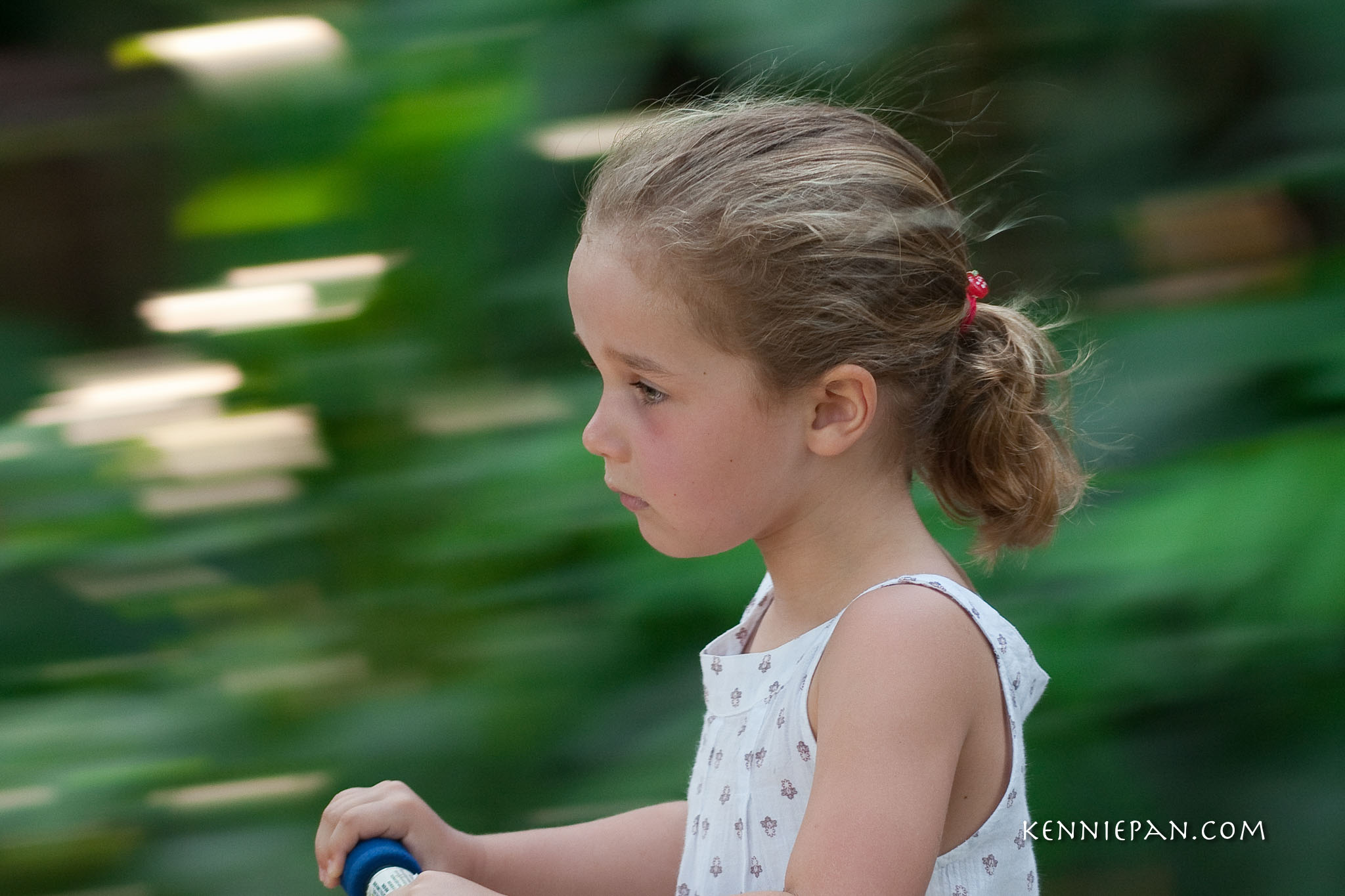
Panning with the Sigma 300 800mm @ 300mm, f/5.6. No problem tracking a little girl going downhill on a kickscooter.
I mainly compared on budget constrains and versatility, and finally ended up with the Sigma 300-800mm. I did not mind sacrificing the slower focusing speed of the 300-800m just for the versatility and extreme reach.
Image Quality
I was extremely surprised with the sharpness of the Sigma 300-800mm when I first tested it on the Nikon D300. As a matter of proven fact like many of us know, the more you zoom on a zoom lens, the quality deteriorates the further you go, and the worst Image Quality shows up at the longest end. Contrary to that belief, it does not apply to all zoom lenses. The Sigmonster definitely ruled that out. From 300mm to 800mm, I was barely able to notice any huge difference in terms of Image Quality deterioration/sharpness deterioration. From 300mm to 800mm @ F/5.6 to F/8, there was little improvement in sharpness other than the Depth of field. That gave me a very clear cut sign that photographs are definitely usable and sharp even at the widest aperture at 800mm. Not necessary to stop down to F/8 at 800mm especially when shutter speed is insufficient.
- Brief opinion on all Focal Lengths at the widest @ F/5.6:
300mm – Sharp
400mm – Sharp
500mm – Sharp
600mm – Sharp
700mm – Sharp
800mm – Sharp (Sharpness look almost identical to my Nikkor 600mm VRII + TC 1.4x III at wide open)
100% crops :
Sharpness ”test” at 100% crops at different focal lengths, with and without the Tele Converter.
All photographs are shot with the Sigmonster mounted on the
Wimberley Mark II (Locked on both axis) +
Gitzo 1548 Mark II (Not extended),
Mirror Locked-Up (Every photo),
Manual Focused on Live View (every photo),
Remote released (every photo) in an indoor, reasonably lit room with no winds.
Note: 100% cropped photos are converted from Nef Raw files, default sharpening amount @ 25, radius 1.0 & detail @ 25.
300mm 100% photo crops does not show the actual sharpness this lens can go to, due to the details of the fonts being too small in the frame). It produces sharper images in the actual field when the subject is large and when it fills up the frame. Good example will be the photograph of the girl on her kick scooter just above.
300mm @F/7.1
300mm @ F/8
300mm @ F/9
____________________
________________
300-800mm + Sigma 2x EX DG TC @ 600mm F/11 (Widest Open)

300-800mm + Sigma 2x EX DG TC @ 600mm F/13 
300-800mm + Sigma 2x EX DG TC @ 600mm F/16
300-800mm + Sigma 2x EX DG TC @ 600mm F/18
300-800mm + Sigma 2x EX DG TC @ 600mm F/20
300-800mm + Sigma 2x EX DG TC @ 600mm F/22
300-800mm + Sigma 2x EX DG TC @ 600mm F/29
300-800mm + Sigma 2x EX DG TC @ 600mm F/40
300-800mm + Sigma 2x EX DG TC @ 600mm F/51
300-800mm + Sigma 2x EX DG TC @ 600mm F/64
_____________
300-800mm + Sigma 2x EX DG TC @ 1600mm F/11
300-800mm + Sigma 2x EX DG TC @ 1600mm F/13
300-800mm + Sigma 2x EX DG TC @ 1600mm F/14

300-800mm + Sigma 2x EX DG TC @ 1600mm F/16
300-800mm + Sigma 2x EX DG TC @ 1600mm F/18

300-800mm + Sigma 2x EX DG TC @ 1600mm F/20

300-800mm + Sigma 2x EX DG TC @ 1600mm F/22

300-800mm + Sigma 2x EX DG TC @ 1600mm F/29
300-800mm + Sigma 2x EX DG TC @ 1600mm F/40
300-800mm + Sigma 2x EX DG TC @ 1600mm F/51
300-800mm + Sigma 2x EX DG TC @ 1600mm F/64
_____________________
As you can see after this test, sharpness is usable at all focal range with & without the TC.
With the 2X DG TC, it gets to it’s peak sharpness at around F/16 – F/20. It starts to get softer from F/29 and onwards (as with all lenses due to diffraction).
Without any TC, this lens gets reasonable, usable sharpness wide open at F/5.6 @ 800mm. Judging from this test, it gets to the sharpest point at around F/9 – F/13, with little difference in sharpness at this range. It starts to get softer after F/16 (as with all lenses).
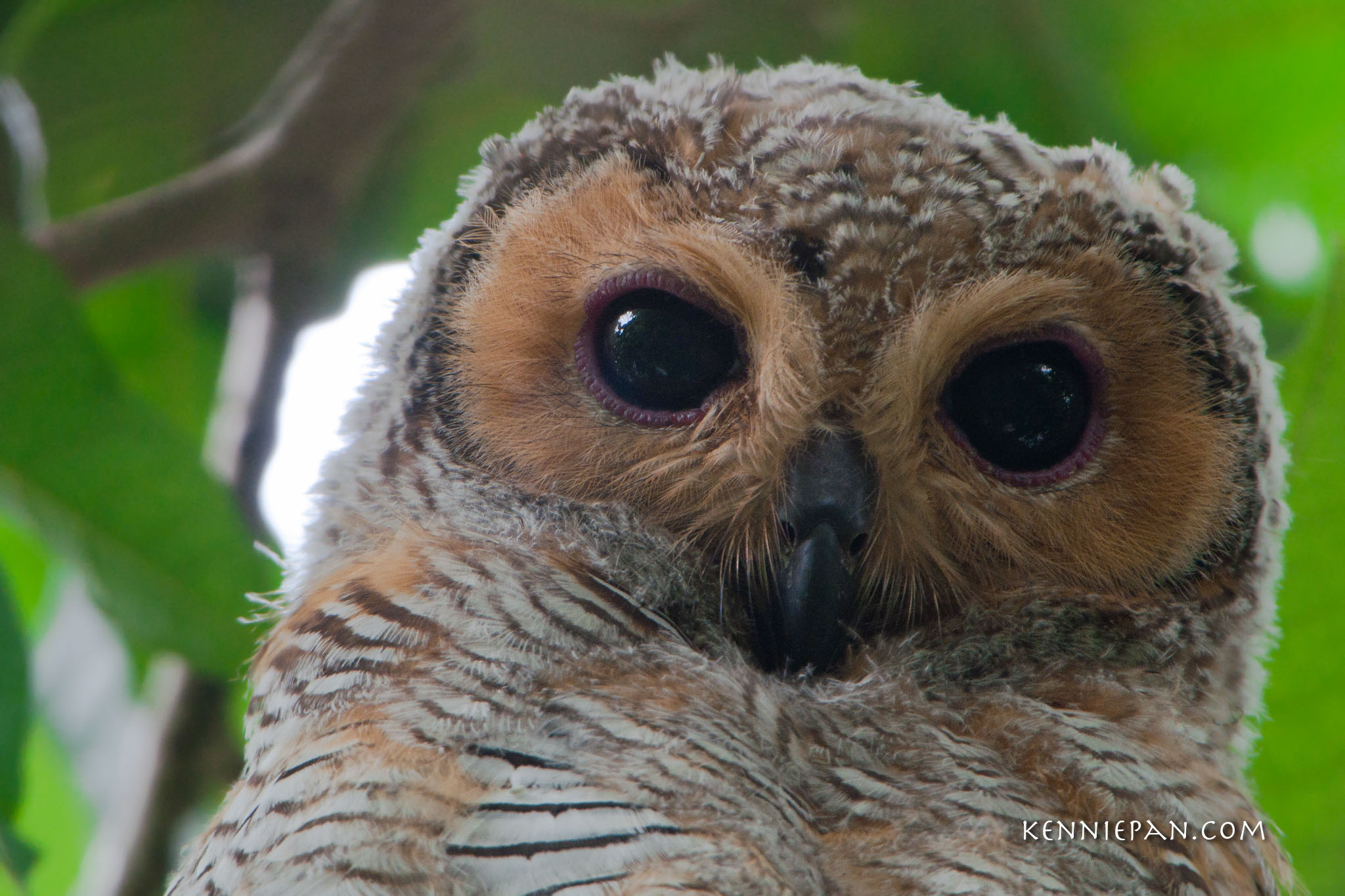
Wild Juvenile Spotted Wood Owl looking at me. glad it kept still for me. Sigma 300-800mm F/5.6 + 2x EX DG TC + 1.5x Nikon cropped body. ISO 500, F/14, 1/15th @ 2400mm (35mm equivalent), Mirror Lock Up Still sharp and very very usable!
Images getting soft beyond F/16 is ok for me, as
1) I seldom have the need to go beyond F10 for super telephoto shooting.
2) stopping down to F/9 to F13 would usually be more than enough for super telephoto shooting. With proper execution of Hyper Focal Distance, the areas that you require it to be sharp and in focus, are covered in the depth of field.
To maximize the lens sharpness, one have to shoot in RAW, as with all other lenses.
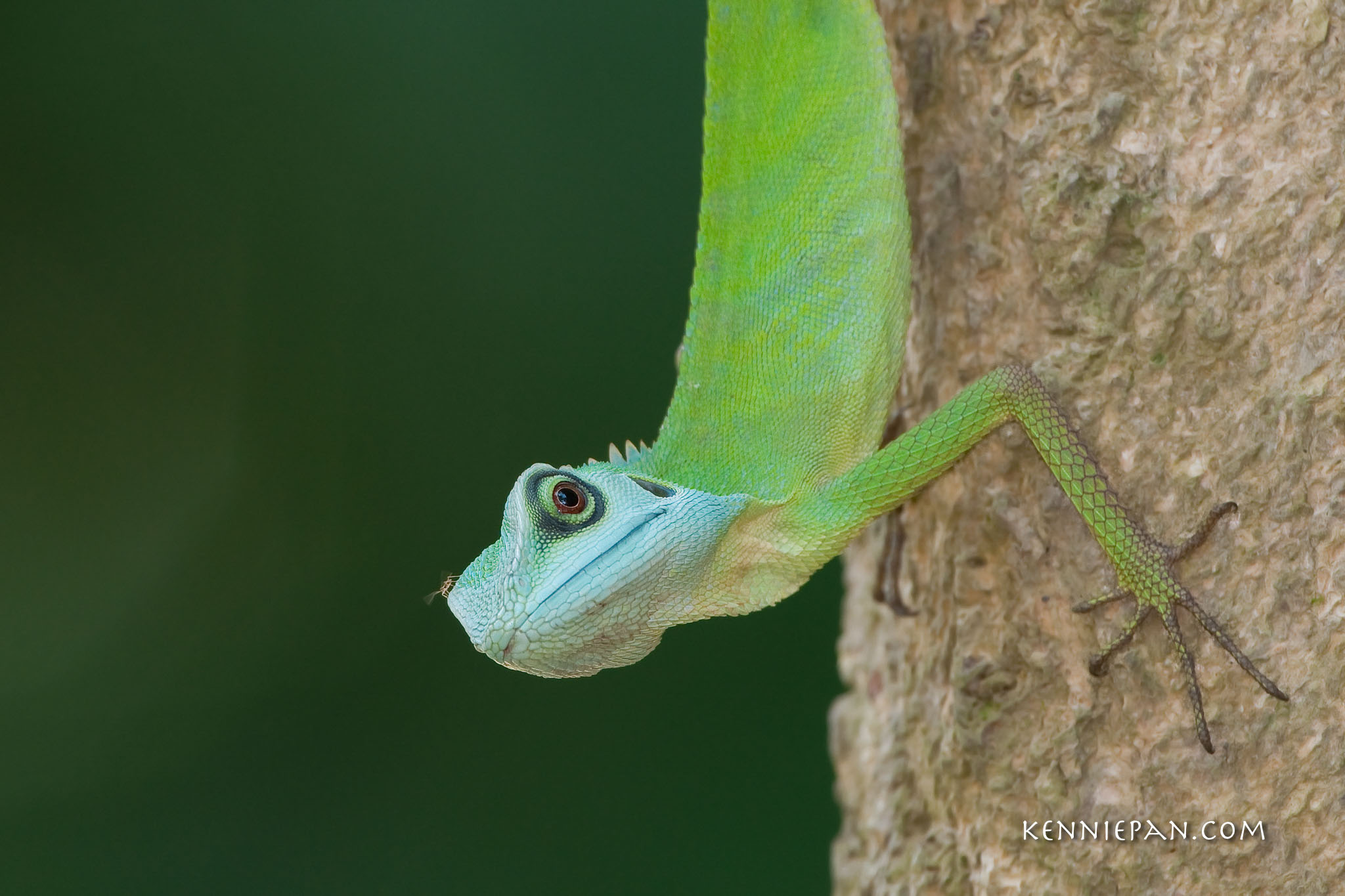
Intricate details seen on the Green Crested Lizard. Even the insect details are not lost! Sigma 300-800mm @ 800mm, ISO 160, F/11, 1/60th, Mirror Lock Up

Not a really sharp photo here due to my fault for being scrimpy on not raising the ISO. Including this here as it got me the top prize of S$3000 in Singapore’s BiodiverCity Wildlife Photography Competition (Junior Cat).

Wild Juvenile Malayan Night Heron Singapore. Abit too close aint it? Sigma 300-800mm @ 800mm, ISO 250, F/7.1, 2 sec, Tripod, Mirror Lock Up

Mangrove Blue Flycatcher in Pulau Ubin Singapore. Sigma 300-800mm @ 600mm, ISO 250, F/7.1, 1/30th sec, Tripod

Purple Heron Sunning itself. This was my first ever usable photo when I got this monster lens. Sigma 300-800mm @ 800mm, ISO 160, F/10, 1/320th sec, Tripod
Proper Long Lens Technique must be executed. This technique is extremely important in super telephoto shooting to get sharp photos. A few people have emailed me about this lens and asked me about the IQ of this lens. They mentioned the subject gets soft when the subject is far even when they stopped down to F/8-F/10, albeit slightly sharper. I presume far = when subject fills up less than 30% of the frame. That is normal as I encounter that too, even on the prime Nikkor 600mm VRII Nano. It gets ‘soft’ as there are no more details and clarity when the subject fills a tiny part of your sensor. That is normal I would say, take your naked eye as a simple example. Try looking at an ant a meter away, it looks slightly distorted/blurred, but as you go closer, the details come back and you are able to fully identity the intricate details on it. Also when you are shooting in a dusty environment/ strong sun lighting in between your distant subject and you, dont forget it it distorts your image sharpness due to refraction of light waves.
Lots of people, especially the Non Photography general crowd, always thinks that once you have the higest end camera, the highest end lens, your photos would come out world class, and come out tack sharp. I will concur that is a very wrong thinking and it is definitely not true. Take a high end powerful car given to someone whom does not know how to control/drive the car, and someone whom has years of experience in driving skills given an entry entry car to the finish line. Whoever will reach the line first?
Autofocus
Sigma uses their own auto focus technology called HSM (Hyper Sonic Motor), driven by ultrasonic waves. In some mid range to most higer end Sigma lenses like the EX (Excellence) series, HSM is incorporated in them.
Autofocus on the earlier and updated DG version has no limiter switch. I would actually love to have the limiter switch like on the Sigma APO 800mm F/5.6 EX DG HSM prime. The Sigma 800mm prime actually has 3 Limiter switches on it.
Contary to what Sigma always writes, ‘This lens uses a motor driven by ultrasonic waves to provide a quiet, high-speed AF”, I beg to differ. Quiet autofocusing speed, yes, I would definitely agree to it. Not to forget very smooth focusing. For High-Speed AF, no, not for me, it would not be placed in the High Speed AF class for me. Focusing speed is only average. I wouldn’t call it High Speed. How do I define High speed focusing? If you have tried Canon’s or Nikon’s USM (Hyper Sonic Motor) or SWM (Silent Wave Motor) from the higer end telephoto lenses models (Gold Ringed Lenses), Sigma’s HSM speed is a crawl. Canon’s and Nikon’s AF speed are blazingly fast. Even when combined with Entry Level DSLR bodies, Canon’s and Nikon’s Auto focusing speed is a notch faster than Sigma’s HSM still. Nikon’s old AF-D (Motor Driven) 80-200mm F/2.8 ED focusing speed is still faster than Sigma’s HSM. Now how fast is the Sigma 300-800mm focusing speed? Take Sigma’s 300-800mm focusing speed to be a tad faster than Nikon’s old AF-D 80-400mm ED VR. That should give you a rough gauge.
Now comes the practical part, since the Sigmonster’s auto focusing speed is average, how does it fare in tracking moving subjects?
For tracking large birds in flight, it is definitely not a problem. Large birds gauge are like Purple Herons, Grey Herons, Storks, Egrets, Sea Eagles and Hornbills.
For tracking medium sized birds in flight, the lens can do pretty well if you anticipate your subject distance and flight pattern. Medium sized birds gauge are like Blue Crowned Night Herons, Bitterns, Purple Swamp hens, white breasted waterhens, and ducks. Either do it by pre Manual Focusing the lens to a distance, or zoom out and zoom back in again to locate your subject. That is 1 very good advantage of the Sigmonster. I have missed many photographic opportunities with a super tele photo prime due to trying to even find out where am I even pointing at, while my target flies off! Chances are the hit rates of your subject being sharp are lesser than photographing large birds when tracking medium sized birds.
For tracking small sized birds in flight, you can actually almost forget about that with the Sigmonster. Small birds gauge are like swiftlets, swallows, sunbirds, flowerpeckers, nuthatches, and sparrows. Not that all is hopeless that you should be keeping your gear the moment you encounter them, there is no harm trying. I have gotten pretty sharp photos of bee eaters diving into the water with the Sigmonster, and also a fruit bat in flight in the middle of the night. I have gotten pretty focused photographs of bee eaters diving into the water. It is not good enough for publication but here are some photographs to share the response time of the Sigmonster. I had to pre anticipate focusing distance of the spot the bee eaters would dive before hand, if not I would not have managed these shots.
I do sports photography with it, humans in action with this lens actually. Sigma’s HSM on the 300-800mm can definitely keep up with humans sprinting, jumping and pole vaulting. Also, to photograph fast moving cars is not a problem for the 300-800mm.
Note: The slower the subject moves, the higher your chance to have your subjects in focus. Strong and good lighting plays a big part too, along with your Long Lens Technique. This applies to all subject size you are trying to keep up with. Without sufficient knowledge and studies of the subject’s movement pattern you are photographing, be prepared to go home with Out-of-Focused photos and not blame the equipment.
Here comes the moon photographs..
Handling and Transportation
The main issue here as with all super telephoto lenses is definitely inevitable.. the weight and size of it. But I have no complains, to get fast and long glass you need large glass for ample light to go through. This is physics. To defy the law of physics and light is definitely difficult. This monster of a lens weighs 5880grams by itself. With the Solid Metal Hood it will be close to 6000grams +. The metal hood screws 1/4 round into the grove of the lens front. A 6kg dumbbell in the gym may be nothing to most fully grown man in the gym. When I carry the 6kg lens, it weighs entirely different from a light 6kg dumbbell. It feels exceptionally heavier, even just by holding the lens itself. Especially for the front where most of the big glass are housed in. The Sigmonster screams for the ground front element first, if you dont handle/mount it properly. Maybe in the future Sigma would use a lighter element that is stronger too as a housing for the glasses in it, just like how Canon designed their new super telephoto lenses.
Thank Sigma’s technicians and engineers for the really really good ergonomic build of the Lens foot. The lens foot is designed in such a way where your fingers grip into the grooves easily and comfortably. The lens foot is unremovable unlike Nikon’s Super telephoto lenses where the original super high footing can be removed. I am all right with it as the Sigmonster’s foot is decently low and thick enough to dampen shutter vibration from the DSLR. Any more lowering of the footing, my fingers might have trouble going in to grip it. Not to mention western people have bigger palms and hands, their knuckles would even hit the lens surface and that would make it extremely uncomfortable carrying it by the Lens Foot.
Transportation of the Sigmonster was always tiring from home to location. Walking to the train station, and then to the bus stop at the edge of the forest can take away my energy by abit. If you will be in a safari jeep all the while right from your hotel’s door step, no problem with it. With this lens, it is best not to walk much. Its like an artillery at war, you wait at a spot, you camp and you do not move much. The bare minimum weight I would usually carry to the forest would be:
- Sigma APO 300-800mm F/5.6 EX DG HSM + Hood + Wimberley P-50 Lens Plate (6130grams)
- Sigma 2x Teleconverter EX APO DG (187grams)
- Additional Lens (850grams)
- DSLR body (Approx 800grams)
- Camera Accessories, batteries, cards, wires, readers,lighter etc (Approx 200grams)
- Binoculars (949grams)
- Torch X2 (300grams)
- Water (1000grams +)
- Food (1000grams + -)
- Dry Rations (100grams)
- Umbrella + Rain Coat (300grams)
- knife + Multi Tool (400grams +-)
- National Geographic Earth Explorer NG 5738 Large Backpack (4500grams) (Sold away the bag soon enough for it adds really unnecessary weight)
- Gitzo 1548 Mk II (3050grams)
- Wimberley Head II (1400grams)
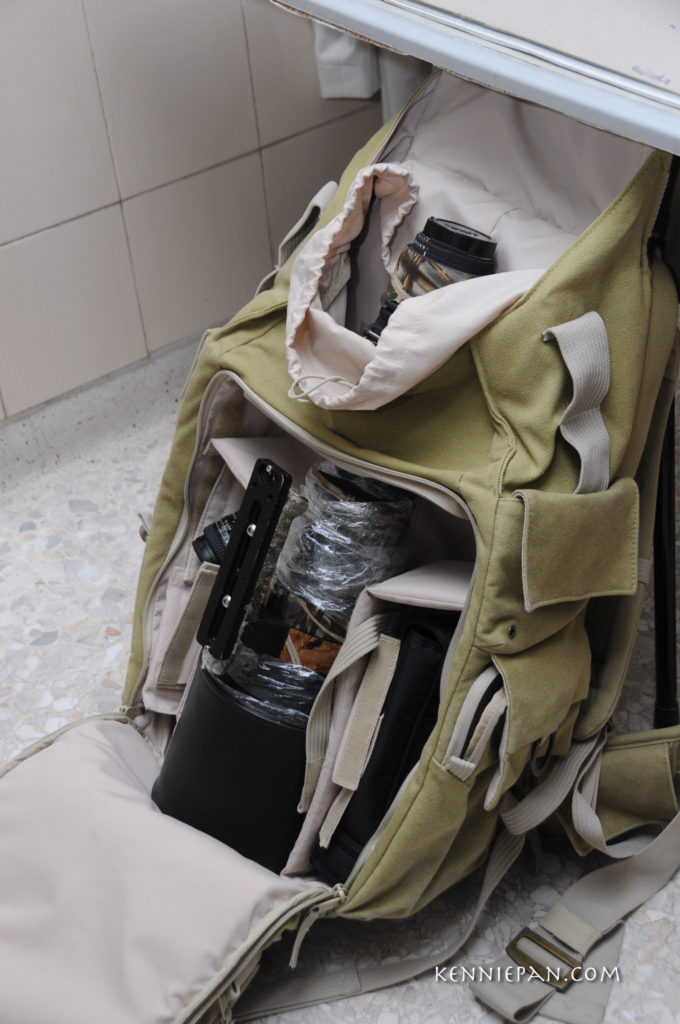
Sigma 300-800mm F/5.6 inside my national Geographic Large Backpack. Hell naw.. I sold away the bag fast enough. I was carrying unnecessary weigth. Just that empty bag itself, it weighs a whopping 4.5kg! No doubt you are 1 tough fella, but sorry, you have to go. 🙁
I had to carry a total weight of 21kg after adding them up. I did change my bag twice to lighten the weight and that helped. I used the Lowepro Lens Trekker 600 AW II for a period of time, it definitely helped to lighten the weight, but I could not keep much items for that bulky size. I did not like the bulk of the bag and there was only 1 Large pocket on that bag. It was not able to hold most of my miscellaneous stuffs. It’s size was also beyond the airline carry on limit too.
I then went down to a non camera Roller bag, the Victorinox 22′ E motion Trek Pack plus. The main reason was that this roller bag was within the airline size limits for Carry-On, and this was the bag that could contain the 21′ Sigmonster at the same time. Many other camera bags that could contain the 21′ Sigmonster was not able to fit into the airline carry on size limit. Now you wont want to check in your precious equipments into any luggage. The lens is just too long and bulky. I just added in foam pads in the Trek Pack Plus bag to cushion my equipments. I could also pull my equipments to location now, saving me alot of energy!
Shooting
Shooting with the Sigmonster requires a load of long lens technique and practice. I compared photographs shot with the lens from the first day I owned it till after a few years with it, my photographs improved significantly, even with the same DSLR body. The more I spend time with it, the more I learn about it. My techniques improved over time as I knew how to counter challenging lighting situations with this beast of a lens.
You can almost forget about handholding this lens even if you could benchpress 40kg per side in the gym. Yes you can support the lens with the DSLR’s viewfinder pressed to your eye, but in no way are you able to stabilise the intensive shake at 800mm. If shooting on a cropped body, the shake would be worse. Getting a few raptor shots in flight under strong sunlighting with no support might be possible if you are strong enough. I will assure you less than 50% of your photographs will be useful from handheld shooting.
There are 3 typical ways I can shoot with this lens with the higest chance of usable photos (Again will like to stress proper technique must be executed..)
1. The most common and sturdiest method -Shoot with a really really solid tripod and a gimbal head. Preferably a Gitzo and a Wimberley Head. Some people prefer the Sachtler head instead of the Wimberley. Individual Preference and it depends what you like. Be ready to fork out at least USD $800 + – for a sturdy tripod and another USD$600 + – for a good Gimbal Head to support the lens. With a Good Gimbal head head it makes shooting with the Sigmonster fluid and effortless. There would be cheaper alternatives like the ones that are manufactured in China. I wouldn’t want to save a few hundred bucks for an increased risk of the expensive glass smashing to the ground though. With long lens technique and practice, you would be able to get sharp photographs of your subject even at night.
2. The 2nd method will be shooting with a monopod. There are cheaper brands you can purchase out there like Sirui, benro etc. The recommended ones are Gitzo & Manfrotto. Be sure to check the maximum weight the monopod can hold. Other wise the legs would be sliding down continuously. The down side of this set up is that you will not be able to shoot under extreme low light conditions like under the thick forest canopies. Even paired with today’s Canon 1DX II/ Nikon D5, F/5.6 would not be an ideal option under forest canopies. So plan well, pre learn your subject, lighting conditions, their native environment and prepare what is needed to prevent hiccups.
3. The 3rd possible method would be bracing the lens on something solid, like on a rock or something you can rest on. This is close to being on a tripod except being slightly rigid.
Specifications:
18 Elements in 16 Groups
Angle of View (On a 35mm sensor): 8.2º – 3.1º
Number of Aperture Blades: 9
Minimum Focus Distance: 6meters
Filter (Rear) size: 46mm
Dimension: 6.2 (Width) x 21.3 in (Length)
Weight: 5880 grams
Mounts: Canon, Nikon, 4-thirds
Hope this helps,
Have a good day ahead and happy shooting!
Feel free to email me for enquiries.
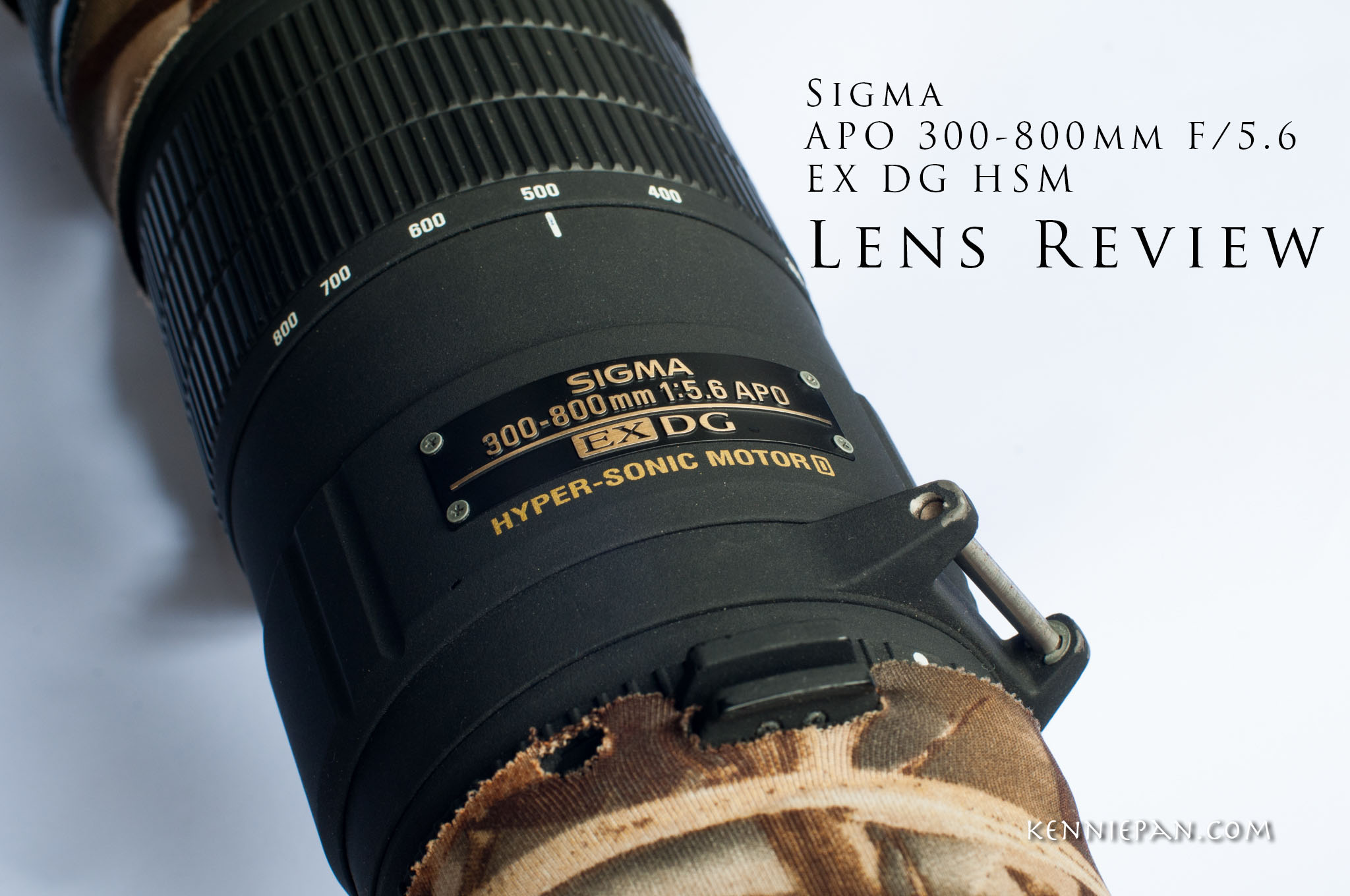

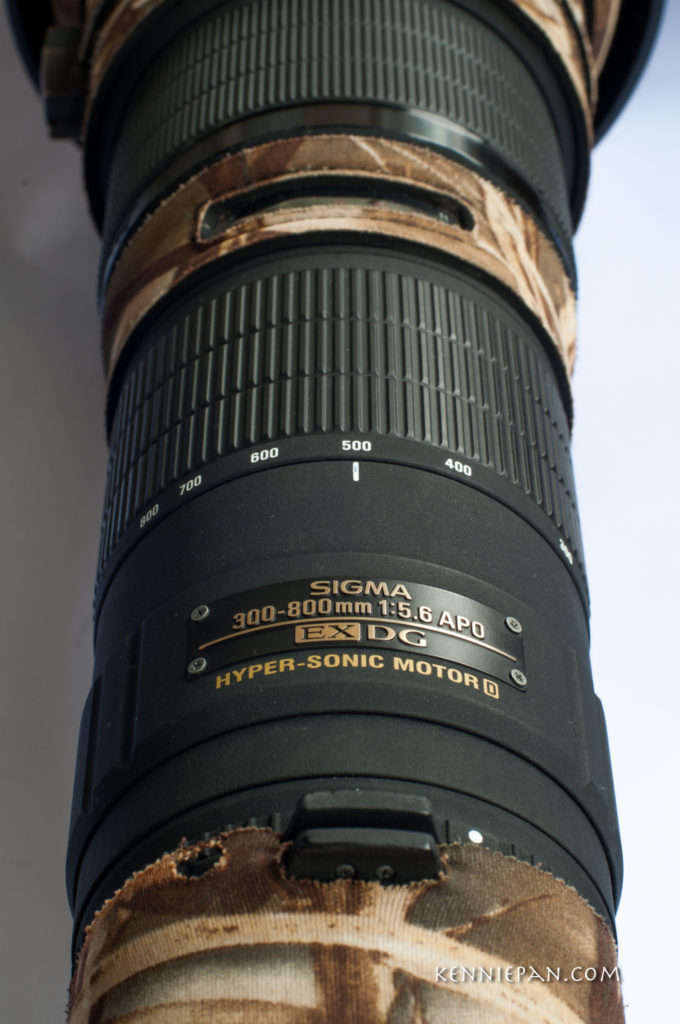




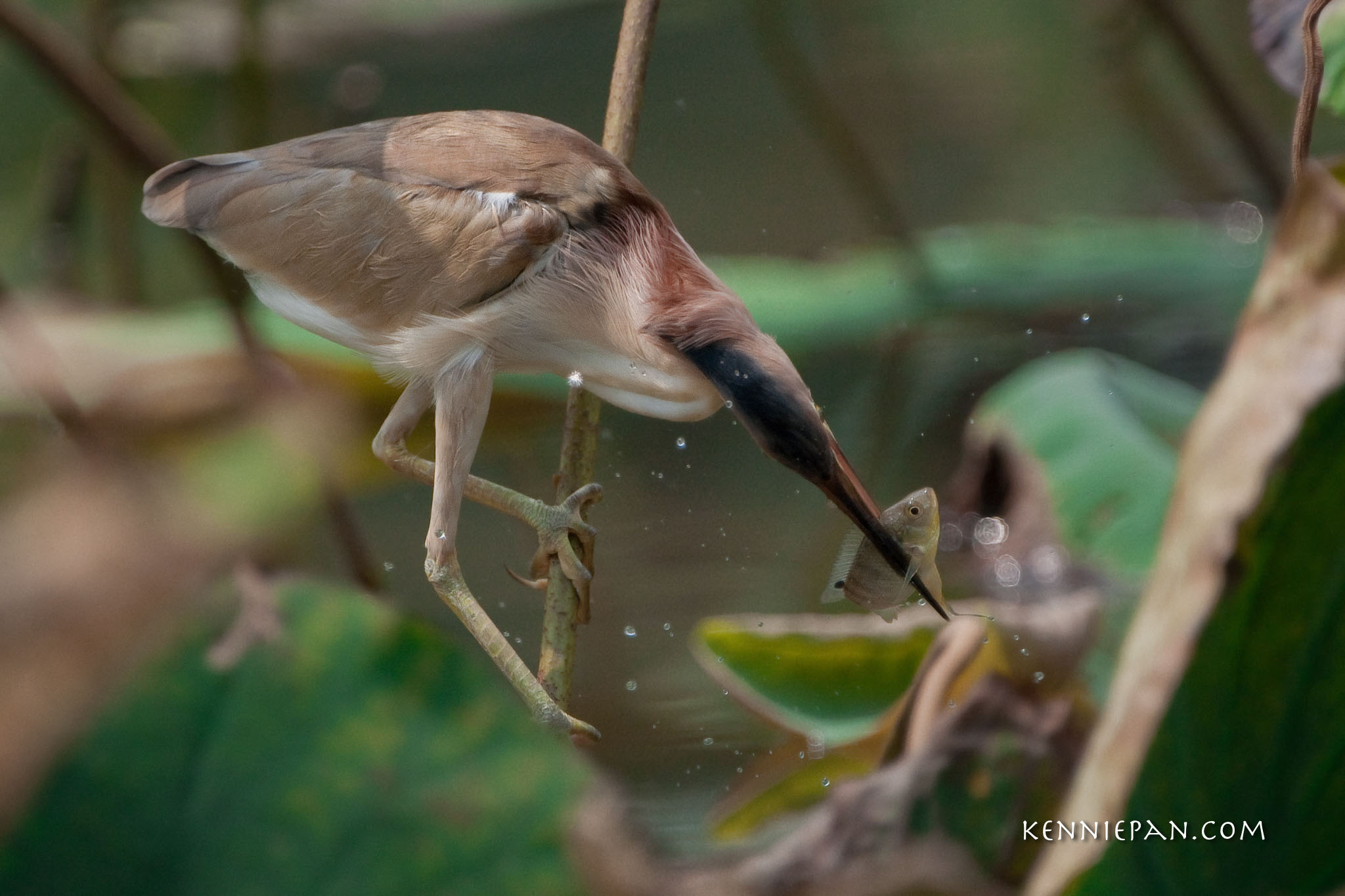

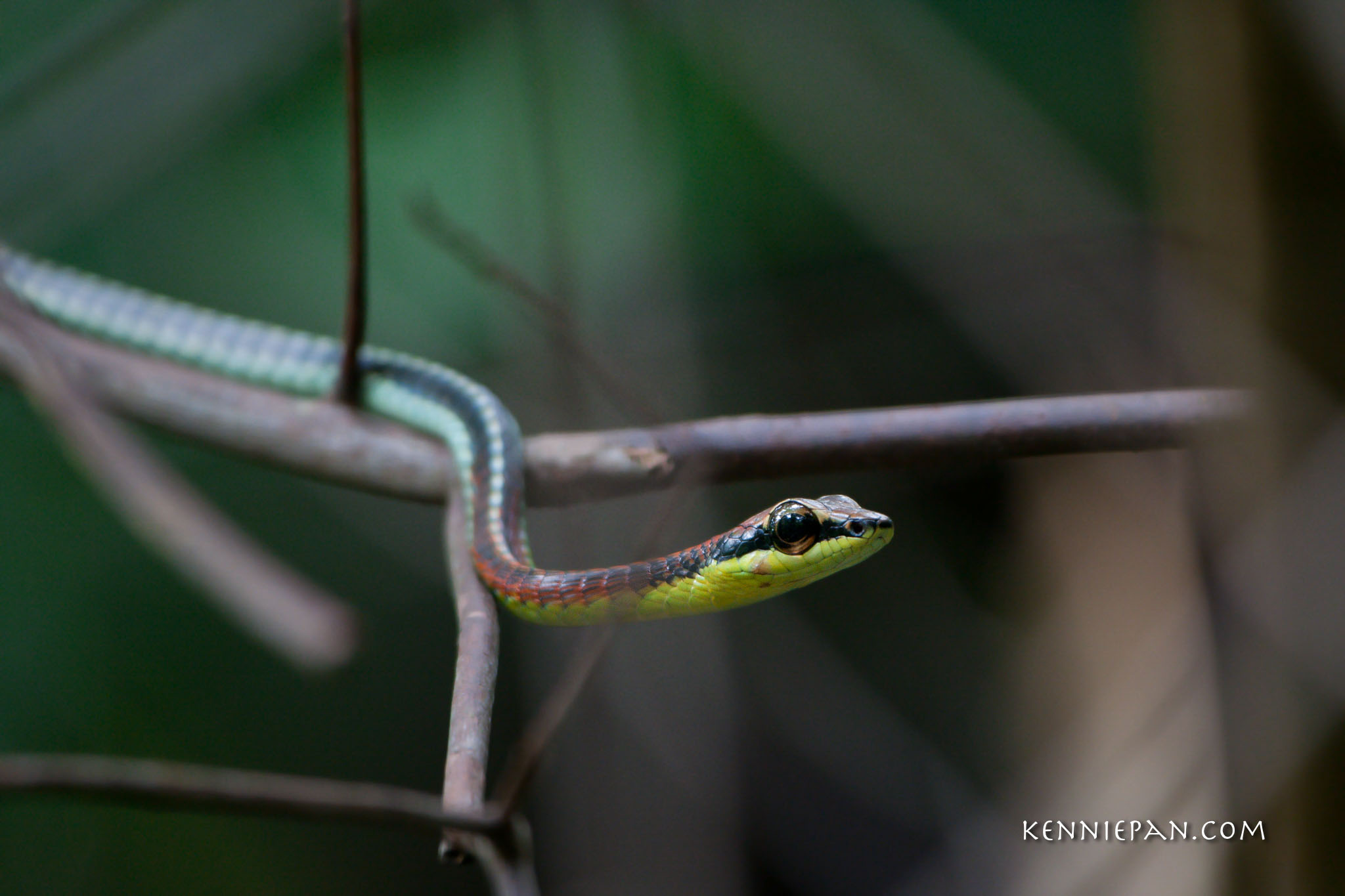
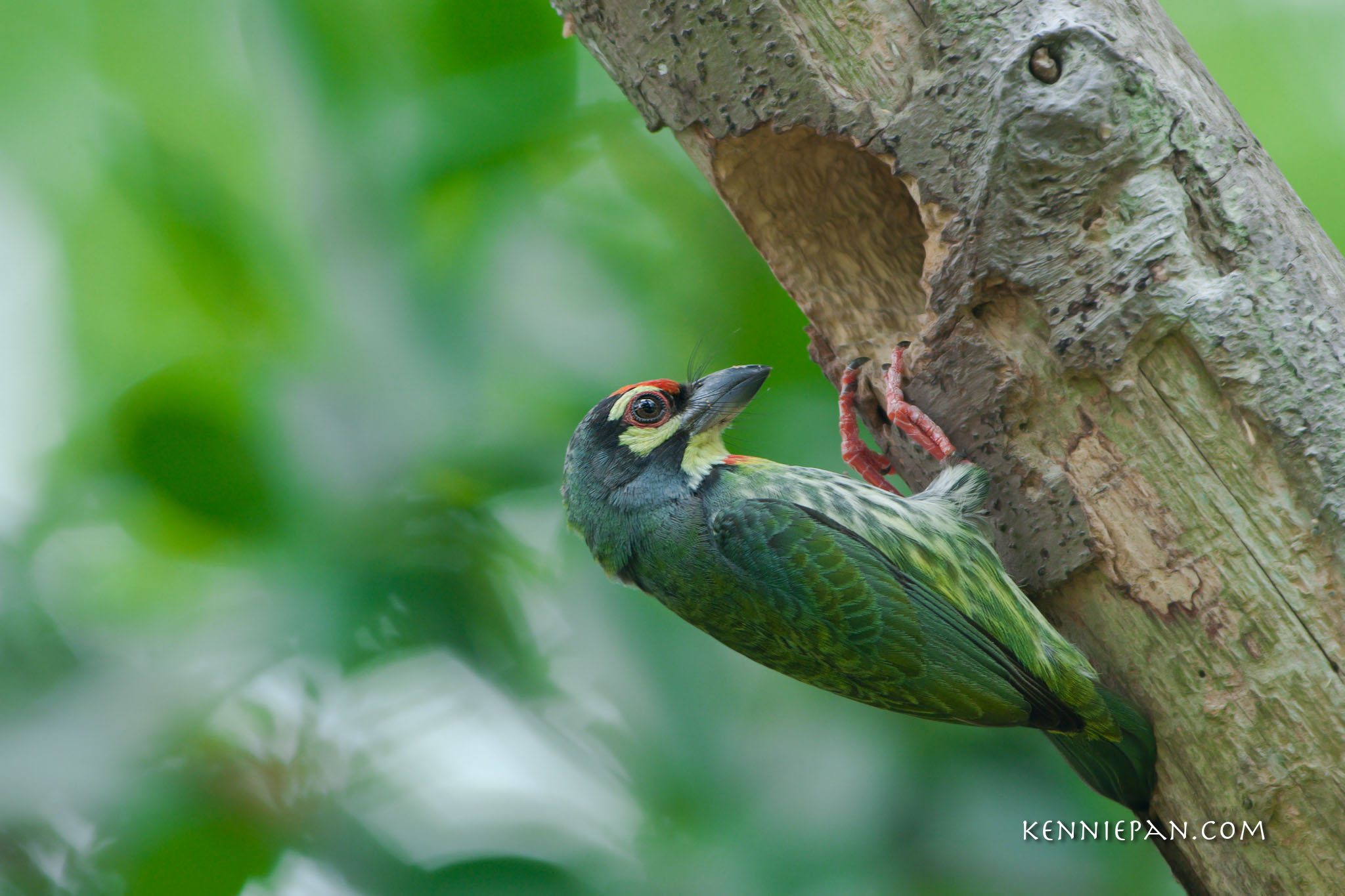























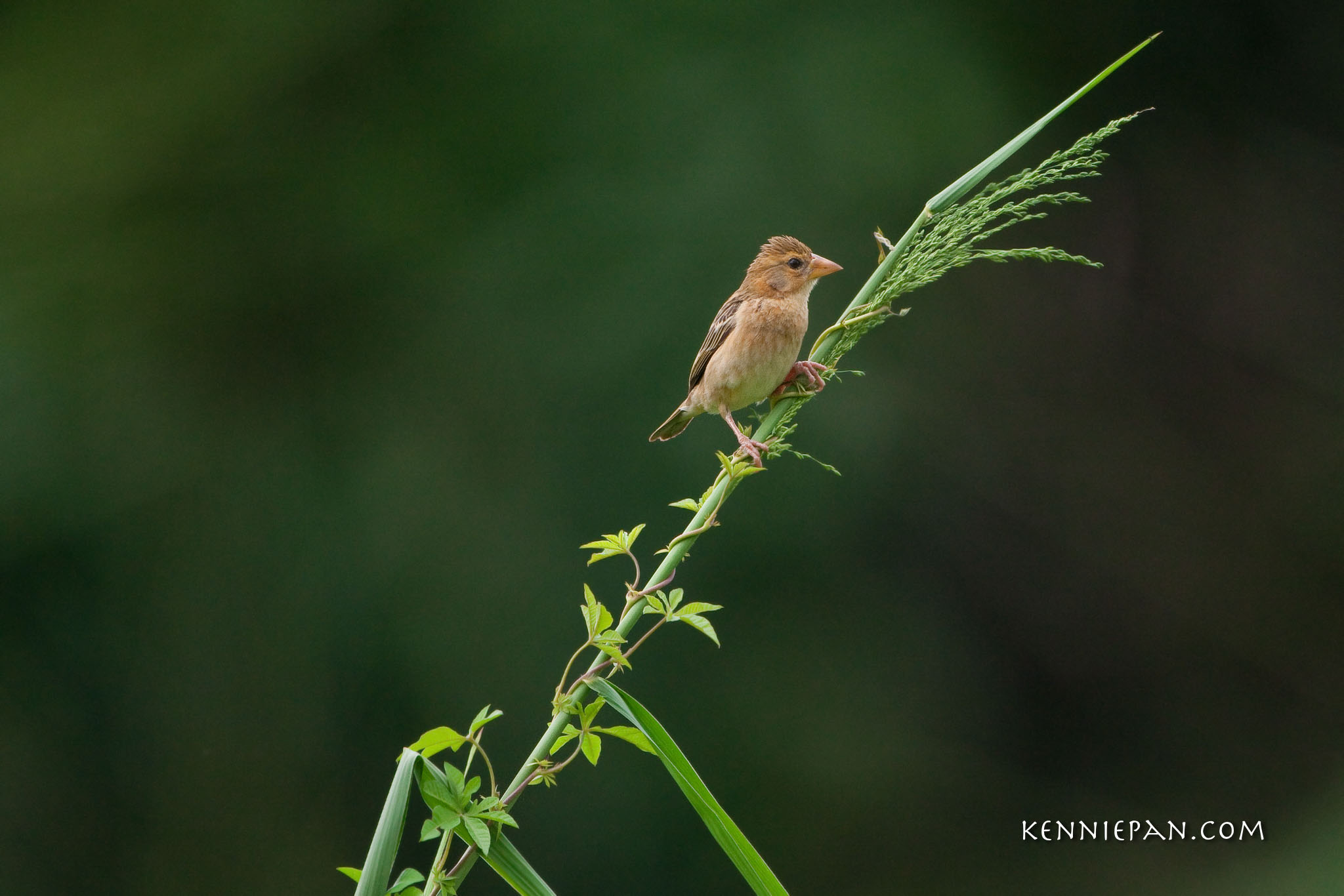
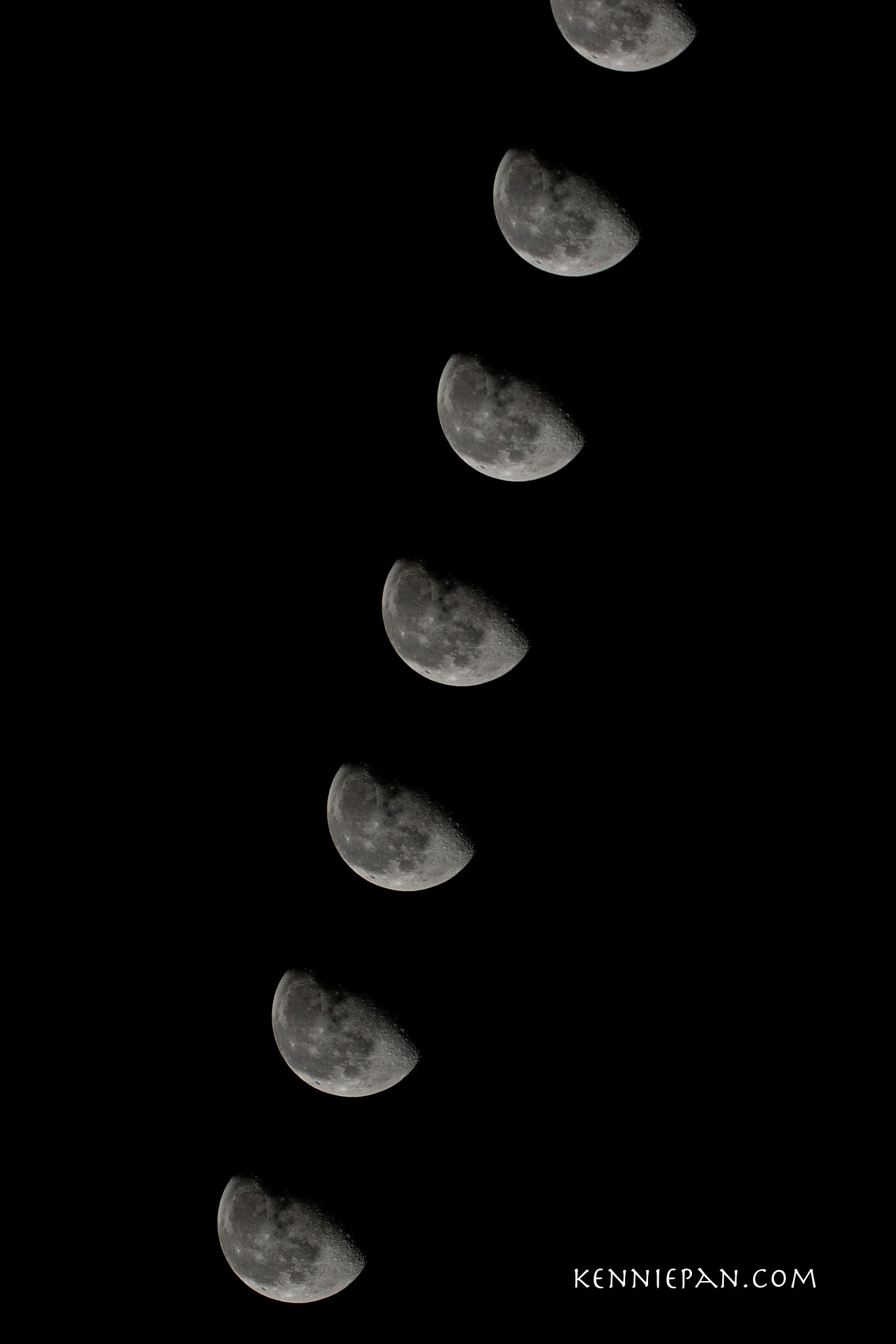





Very nice and thorough article showing real-world usage. Sometimes the older gear is better than we think. Christopher Frost also has an interesting technical review.
Je viens d’acheter un 800/5,6 …il va arriver sous quelques jours, je l’ai eu à 1600 €. J’ai hâte
I plan to try this lens with Canon 5DSr.
Let me know if this Year 2005 lens is still sharp with a New body producing extremely high megapixels!
Hi Kennie,
I actually own and use the prime Sigma 800 mm f/5.6 since 2016 for my birding activities, after reading much reviews and research. Ya I though it was a good lens (of course it is now….) but was very disappointed with the results initially after spending much on the lens. Like you said, it takes time to master the use of this monster. I would not recommend using it a full f/5.6 even it is a prime as the results for me is absolutely horrible. Stop down to f/8-16 and the IQ is superb. Very heavy lens and it’s a jeep cart/sturdy tripod set up system…and sit down and wait for your bird to drop by although I have tried shooting hand-holding the monster, with one elbow supported by the middle console of my truck through the open window. Results are very usable shots but not recommended for lengthy shooting sprees!!! Good training for arm wrestling…
For jungle trekking, I prefer my Nikon 200-500 mm f/5.6 with either a DX or FX body, which is a very good all rounder lens at all focal lengths and even at max aperture. My favourite birding glass.
Ya I am very impressed by your photos with this monster…and I like my monster too as what you also do with it.
Hi Willy,
Thanks for your info and thoughts about the lens. I have not used the Sigma 800mm Prime yet, but i presume it should be sharper than the zoom 300-800mm lens (which was already a reasonably sharp lens considering the massive zoom range). If there is a need to stop down to F/16 for wildlife, its almost useless having it. At F/5.6 it should be usable too, if not there is not point buying a F/5.6 lens to shoot at slower F Stops.
And you are right, when we shoot with these lenses, its more of like an artillery at war. Seldom move, fixated position most of the time on the tripod, waitign for the subject to come. Just too heavy to move much. In fact when i used to be with this crazy 5.88kg lens, i was too lazy to move around. It was a problem going into flights to as the lens was too long. I sold it off and in the end got the 600mm F/4, sold it also because it was just too heavy and big to move around efficiently, and now using the latest light weighted Nikkor 200-500mm F/5.6.
That lens is fantastic, especially it is only an amateur lens and produces decently sharp photos. Though of course this new 200 -500mm lens sharpness is still incomparable to an older 600mm lens.
Regards,
Ken
I am looking at going to kenya on safari and already use the 150-600 canon. Do you still think this lens has a place in the current market?.. may buy if so for my next trip
Hi,
You should test this lens on the 24mp/ 36 mp bodies prior to purchasing, as this lens was manufactured way before 24mp even came out.
Its sharp on the 12mp bodies nevertheless.
I commended you for your wonderful work.
Now that you have success with Nikon on Sigma lens, I need your help. I have Sigma 500 f4.5 for Nikon, so far I have been using it with Sony A and E-mount and Lumix Gx8 Micro Four Third on MF with no problem. I bought Nikon D5500 it only work at f/32 on MF. I talked to B&H I was advice to use D7200 with Autofocus. It work on MF and AF. but autofocusing does not work. I would like to get Sigma 300-800 for Nikon, ounce I have successful with my camera problem. I would like to ask your suggestion for Nikon model with autofocus for APS-C and Full-Frame. Thank you. Abe
Hi Trinia,
Sigma 500mm F/4.5 does not have AF at all with the Older Original Sigma TCs, same goes with the Sigma 300-800mm. You might want to check out the NEW Tcs that are released with the Sport lenses. They support autofocus for lenses with up to F8.
price please
Hi Shanmugan,
Please check your local stalls for the price as price range differs in different countries.
I Kennie,
I to have the Sigma 300-800mm, I have a question on the lens. I’m using a sturdy Gitzo tripod and Wimberley head. Sometimes I do get Blur shots , I find it hard sometimes to get the perfect clear shots with it. It does take a lot of practice.
What is the best solution to getting clear shots with this beast, I sometimes used a wireless remote and still get blur shots, I do up the shutter to 1/2500 and higher. I just can’t figure it out. I would appreciate your help on this sigmonster?
The photos with the Swans I used Sigmonster and Great horn owls as well as the Bald eagles on some, All taken in Raw and editing in Photoshop. With Nikon D4s
Thank you,
Michael
Hi Michael, not sure if you are notified by this, you can message my facebook page. I m more active there. Will get back to you when i m on the com.